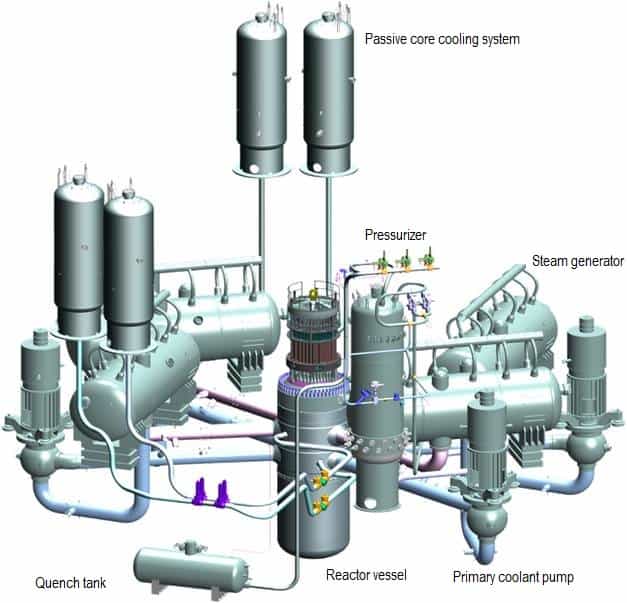Pressurized water reactors use a reactor pressure vessel (RPV) to contain the nuclear fuel, moderator, control rods and coolant. They are cooled and moderated by high-pressure liquid water (e.g., 16MPa). At this pressure water boils at approximately 350°C (662°F). This high pressure is maintained by pressurizer. Inlet temperature of the water is about 290°C (554°F). The water (coolant) is heated in the reactor core to approximately 325°C (617°F) as the water flows through the core. As it can be seen, the reactor has approximately 25°C subcooled coolant (distance from the saturation).
The hot water that leaves the pressure vessel through hot leg nozzle and is looped through a steam generator, which in turn heats a secondary loop of water to steam that can run turbines and generator. Secondary water in the steam generator boils at pressure approximately 6-7 MPa, what equals to 260°C (500°F) saturated steam. Typical reactor nominal thermal power is about 3400MW, thus corresponds to the net electric output 1100MW. Therefor the typical efficiency of the Rankine cykle is about 33%.
The unused steam (45°C) is exhausted to the condenser, where it is condensed into water. The secondary side of the condenser extracts the waste heat (2000MW; 30°C) and the waste heat is released into environment. The resulting secondary water is pumped out of the condenser with a series of pumps, reheated, and pumped back to the steam generator.

Source: http://www.bellona.ru/